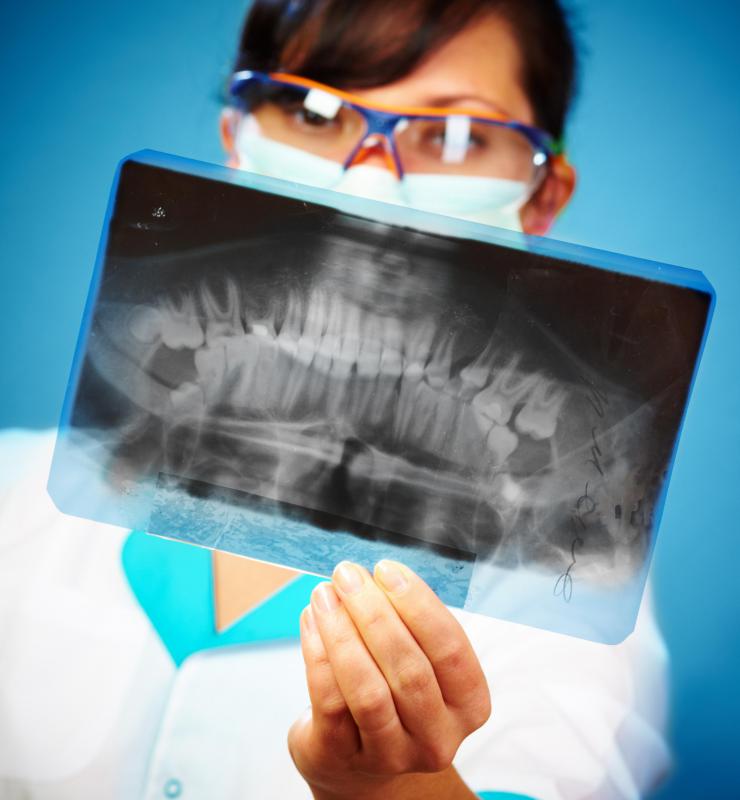At WiseGEEK, we're committed to delivering accurate, trustworthy information. Our expert-authored content is rigorously fact-checked and sourced from credible authorities. Discover how we uphold the highest standards in providing you with reliable knowledge.
What is the Maxilla?
Situated in the front of the skull, the maxilla is a bone that makes up the central third of the face, including parts of the eye sockets and nasal cavities, and the upper jaw. There are two maxillary bones, one on the right and one on the left, and they join in the middle at the intermaxillary suture. Above, they join with the frontal bones of the forehead and laterally with the zygomas, or cheekbones. Inside the maxilla is a cavity full of air called the maxillary sinus.
The maxilla forms the upper jaw, part of the floors of the eye sockets, or orbits, and the lower parts and sides of the nasal cavities. Its palatine process extends forward to create the hard palate. A hole known as the infraorbital foramen is situated in the maxilla just underneath the orbit. This allows a branch of the maxillary nerve called the infraorbital nerve to emerge from the skull to supply sensation to the skin of the upper lip, lower eyelid, the side of the nose and the cheek.

Together with other sinuses in the bones of the face the maxillary sinus has a function in decreasing the heaviness of the skull and helping the voice to resound. The sinuses can also act as a "crumple zone" during accidental trauma. Inside the maxillary sinus is a lining of mucous membrane that is full of glands. These secrete mucus which is normally drained through the nose. When the sinuses are full, or blocked by the swelling that follows an infection, the quality of the voice will change.

The maxillary sinus contains the roots of the teeth from the upper jaw and these are only covered by a thin layer of bone, or in some cases only the lining membrane. This means that an infected tooth can lead to an infected sinus, known as sinusitis. Sinusitis has symptoms of pain and fatigue and can be treated by antibiotics or sometimes antifungal drugs, together with pain relief.

A blow to the face, perhaps in a motor vehicle accident or during a fight, can fracture the maxilla. This usually results in the teeth being displaced, the eyeball pushed back and loss of feeling in the upper lip and cheek, which are the areas supplied by the infraorbital nerve. After initial emergency treatment to stabilize the patient, fractures of the maxilla are usually assessed by a specialist in orthopedics. They may be treated by fixing the broken bone to surrounding stable bones. For example, the maxilla and the mandible may be fixed together, allowing the damaged bone to heal.
AS FEATURED ON:
AS FEATURED ON:


















Discuss this Article
Post your comments